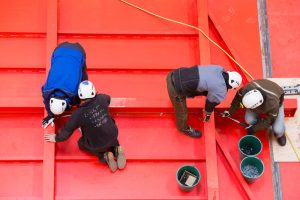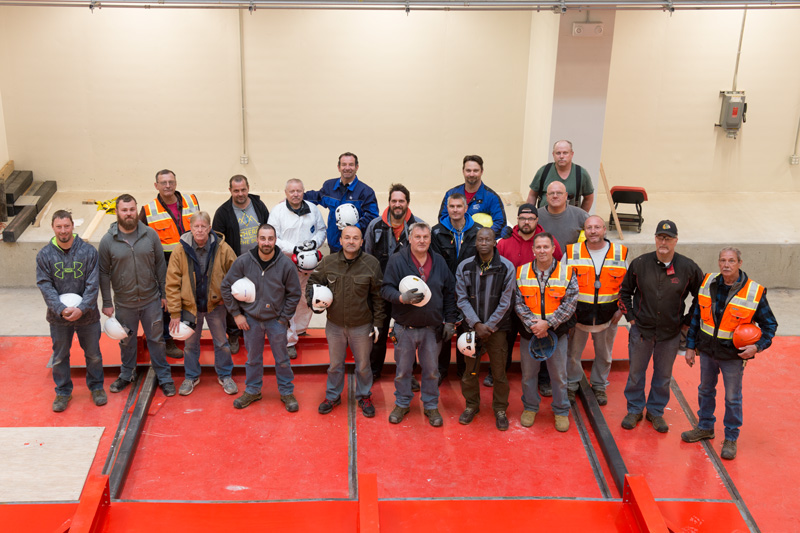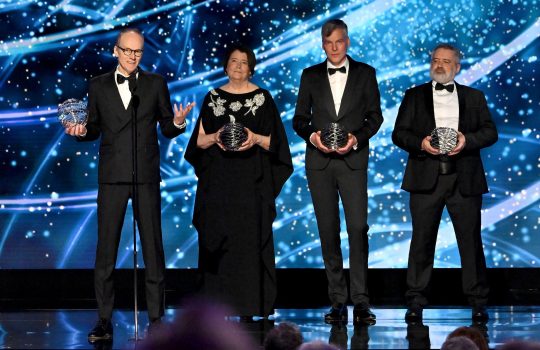
Technicians assemble for ICARUS the warm vessel steel structure that will host two detection chambers. Photo: Reidar Hahn
No fewer than three particle physics laboratories lay claim to some aspect of the detector, called ICARUS, that will soon become the newest member of Fermilab’s neutrino family. The Italian INFN Gran Sasso National Laboratory took data using the 760-ton, 65-foot-long detector for its ICARUS experiment from 2010 to 2014. The European laboratory CERN sent beam to the detector when it was at Gran Sasso. And Fermilab is soon to inherit the detector for its Short-Baseline Neutrino Program. Fermilab is currently awaiting the detector’s arrival from CERN, where staff have been refurbishing it for use in the SBN Program.
So it is fitting that technicians, led by Frederic Merlet of CERN, from the two European laboratories recently converged at Fermilab to work with the U.S. ICARUS team, led by Fermilab’s David Augustine.
During the visit, which took place from May 1-21, the technicians assembled the steel structure that will host the detector’s two 300-ton time projection chambers.
“They accomplished this amazing task with absolutely superb work ethic and cooperation,” said Fermilab physicist Fernanda G. Garcia, who is the project installation and integration manager. “The installation went smoothly thanks in great part to Dave and Frederic’s leadership skills.”
It was not only just technicians, but also machinists, quality and safety personnel, business administrators, and transportation coordinators who came together to prepare the detector’s future home.
The contributions of our trans-Atlantic partners at CERN and INFN demonstrate once more that the science of particle physics is a global pursuit.

Thanks to the CERN, Fermilab and INFN crew for paving the way for ICARUS. First row, from left: John Anderson III, Justin Briney, Ben Ogert, Daniel Vrbos (all Fermilab), Marco Guerzoni (INFN), David Augustine (Fermilab), Vincent Togo (INFN), Timothy Griffin, Thomas Olszanowski, Michael Cooper (all Fermilab). Second row, from left: John Voirin (Fermilab), Francois-Andre Garnier, Anatoly Popov, Filippo Resnati, Frederic Merlet (all CERN), Jason Kubinski, Bob Kubinski (both Fermilab). Third row, from left: Pierre-Ange Giudici (CERN), Michael Jeeninga, Mark Shoun (both Fermilab). Not pictured: Joseph Harris, Kelly Hardin, Bryan Johnson and Craig Rogers, all of Fermilab. Photo: Reidar Hahn



